
Roots
For generations, the language surrounding textured hair—coils, kinks, and curls—has shifted, mirroring the broader currents of societal understanding and self-perception. Yet, beneath the surface of fleeting trends and imposed standards, an enduring spirit resides within each strand ❉ a legacy of ancient practices, communal strength, and personal affirmation. How does the natural hair movement reflect a reclaiming of cultural hair heritage? This query invites us not to merely observe a cosmetic preference, but to listen intently to the whispers of history carried in every curl and coil.
It is a dialogue with ancestry, a vibrant act of remembering what was once dismissed, and a declaration of inherent splendor. This journey into the natural hair movement is not a casual stroll through modern beauty norms; it is a profound exploration into the very soul of a strand, a deep dive into the historical roots and scientific intricacies that define textured hair, all viewed through the lens of a heritage continually reasserting itself.

Hair’s Ancestral Blueprint
The foundation of the textured hair heritage begins with its inherent biological makeup. Each helical structure, each delicate cuticle pattern, stands as a testament to adaptation and resilience, honed across millennia. Textured hair, particularly Afro-textured hair, displays a unique ellipsoid or flattened cross-sectional shape and a helical growth pattern that causes it to spiral.
This contrasts with the typically rounder cross-sections of straight or wavy hair types. Scientists believe this unique structure, which can result in the smallest fiber diameter among human hair types (averaging around 55 microns) while exhibiting great variability in individual strand diameter, originally served as an evolutionary shield.
Textured hair’s helical structure stands as a biological testament to ancestral adaptation, offering natural protection against environmental elements.
It offered protection against the intense ultraviolet radiation of equatorial sun, providing insulation for the scalp and retaining moisture in arid environments. This deep biological reality, a genetic inheritance, forms the very first connection to an ancient heritage, a living archive within our bodies. The natural hair movement, at its biological core, acknowledges and honors these fundamental characteristics, moving away from past attempts to reshape hair to conform to external, often conflicting, beauty ideals.
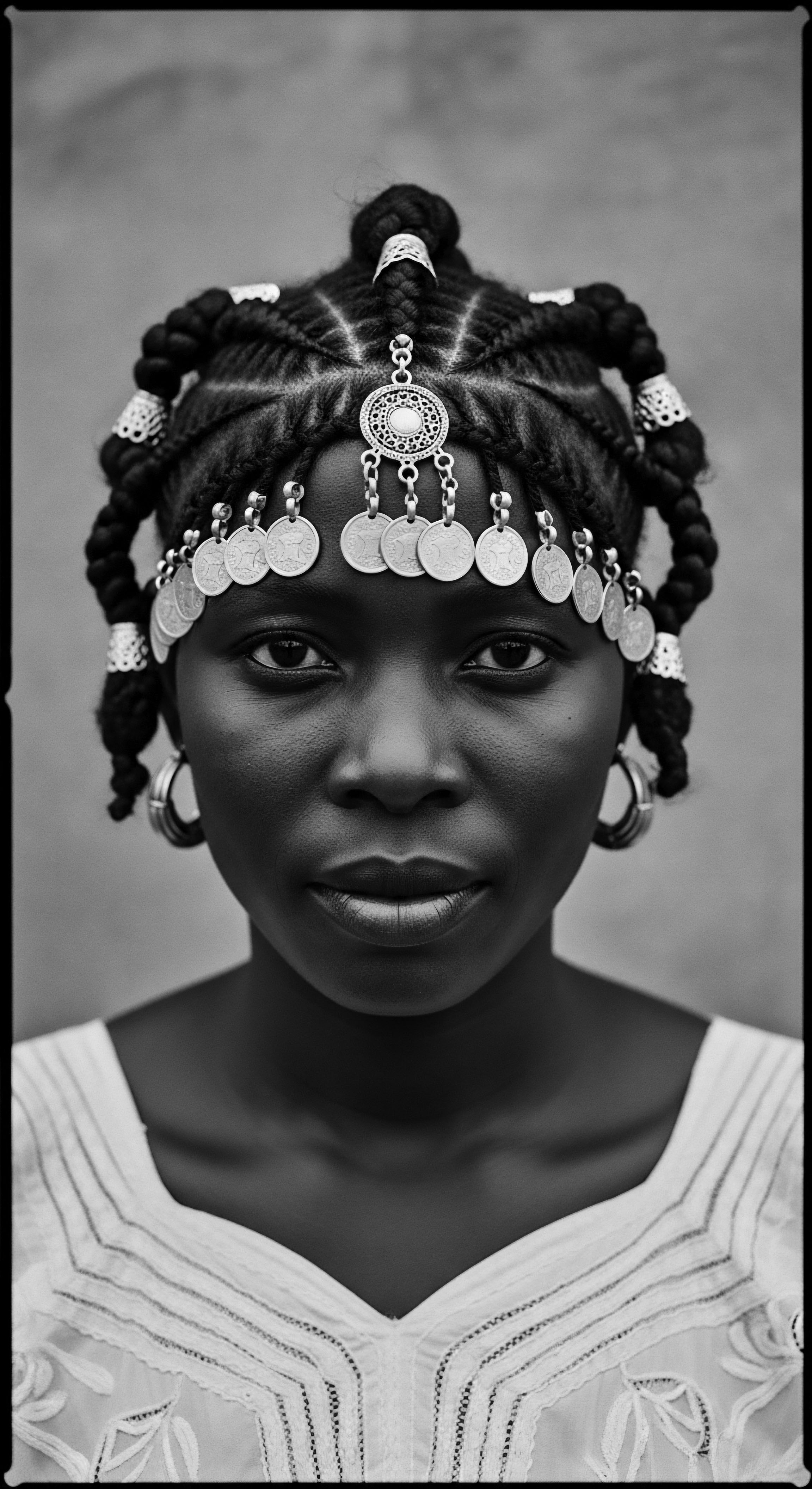
Naming the Crown ❉ Lexicon and Lineage
The language used to describe textured hair has often been fraught with colonial imposition, frequently relying on derogatory terms that aimed to dehumanize and diminish. Historically, terms like “nappy” were employed to shame and control, drawing parallels to sheep’s wool in an act of racial denigration. The natural hair movement consciously challenges this legacy by actively reviving and creating a lexicon that celebrates the diversity and beauty of coils, kinks, and waves.
Consider the shift ❉ where once there was a singular, often disparaging descriptor, now there exists a rich vocabulary that distinguishes between various curl patterns and textures, such as Coily, Kinky, and Wavy. This linguistic reclaiming is more than simply finding new words; it is an act of restoring dignity and specificity to hair that was systematically denied its inherent worth. It allows individuals to speak about their hair with precision, affection, and pride, linking their personal identity to a collective cultural narrative that predates colonial distortion.
| Historical Descriptor (Colonial Era) "Nappy" / "Bad Hair" |
| Traditional/Reclaimed Term (Natural Hair Movement) Coily / Kinky / Afro-textured |
| Cultural/Scientific Context A direct challenge to Eurocentric beauty standards that deemed natural Black hair as unprofessional or uncivilized. These terms accurately describe the tight, helical curl patterns, validating their existence and beauty. |
| Historical Descriptor (Colonial Era) "Unkempt" / "Unprofessional" |
| Traditional/Reclaimed Term (Natural Hair Movement) Locs / Braids / Twists |
| Cultural/Scientific Context Styles with ancient African origins, once discouraged or forbidden in public/professional settings, are now embraced as symbols of heritage, resistance, and personal identity. |
| Historical Descriptor (Colonial Era) "Processed Hair" |
| Traditional/Reclaimed Term (Natural Hair Movement) Chemically Straightened / Relaxed Hair (with critical awareness) |
| Cultural/Scientific Context Recognizing the historical context of chemical alteration as a survival tactic to conform to societal prejudices. The movement advocates for choice, emphasizing natural health and heritage. |
| Historical Descriptor (Colonial Era) The shift in terminology represents a profound cultural transformation, moving from imposed denigration to self-defined celebration, recognizing hair as a living aspect of identity and ancestral connection. |
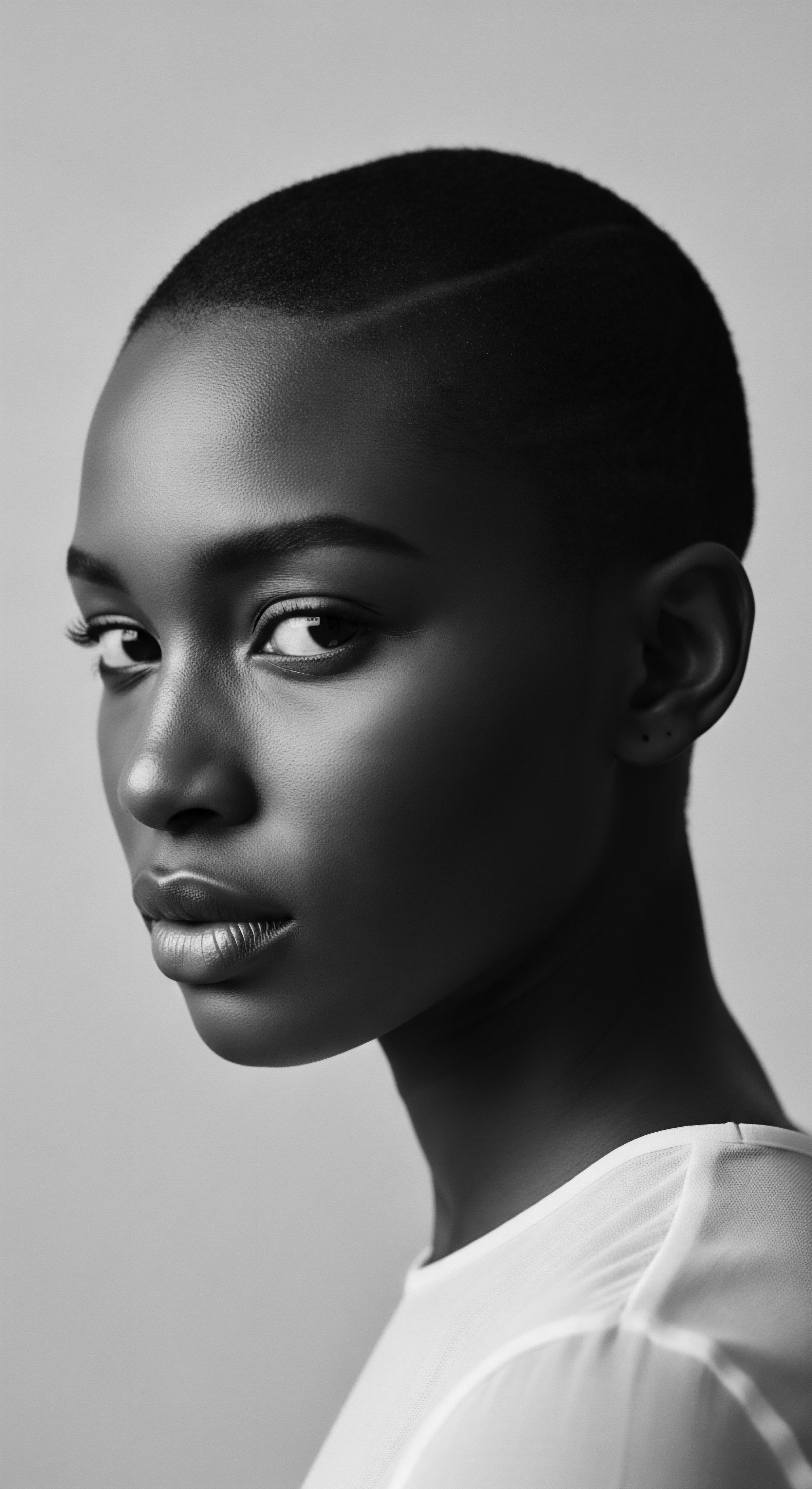
Classification and Identity’s Fabric
Contemporary hair typing systems, like the Andre Walker Hair Typing System, categorize hair into types 1 (straight) through 4 (coily), with sub-classifications (a, b, c) that denote curl tightness. While these systems offer a practical guide for care, their emergence also mirrors a societal need to dissect and understand hair’s diverse expressions, especially those that were historically marginalized. From a heritage perspective, this classification can be seen as a modern attempt to systematize what ancient African societies understood intuitively ❉ that hair varied greatly and carried immense meaning.
In many pre-colonial African communities, hairstyles identified an individual’s Age, Marital Status, Ethnic Identity, Wealth, and even Social Rank. The patterns woven into hair served as a visual language, conveying complex social information without words.
The natural hair movement, by embracing and promoting awareness of various textures within the Type 3 and Type 4 categories, re-establishes a sense of ownership over these classifications. It removes the external gaze that once judged such hair as “difficult” or “unmanageable” and replaces it with an internal appreciation for its natural form, affirming its inherent beauty and diverse characteristics. This recognition encourages individuals to learn about and care for their specific hair type in ways that respect its natural properties, rather than attempting to force it into forms it was never meant to hold.

Echoes from the Source ❉ Growth and Ancestral Wisdom
Hair’s journey from follicle to full length, its growth cycle, is a biological process influenced by genetics and environment. Ancestral wisdom, passed down through generations, held intuitive understandings of how to encourage healthy growth and retention, often through diet, natural remedies, and protective styles. These practices, now often corroborated by modern science, highlight the deep knowledge held within various African communities regarding hair care. For instance, the use of certain plant-based oils and butters for hair growth and scalp health was common.
This section lays the groundwork, establishing how the natural hair movement, at its most fundamental, returns to the very biological and historical truths of textured hair. It begins the process of peeling back layers of imposed narratives, revealing the ancient, resilient spirit of hair heritage.

Ritual
The transition from understanding hair’s inherent biology to actively engaging with its styling and care marks a profound shift towards cultural reclamation. The ritual of hair care, far from being a mere aesthetic pursuit, has always been a central pillar of communal life and personal identity within Black and mixed-race communities. How does the natural hair movement embody this tradition of ritual?
It does so by revitalizing ancient techniques, re-contextualizing tools, and re-sacralizing the act of tending to one’s hair as a connection to a living heritage. This section explores how the natural hair movement breathes new life into these traditional practices, transforming them into a contemporary expression of ancestral continuity and personal affirmation.
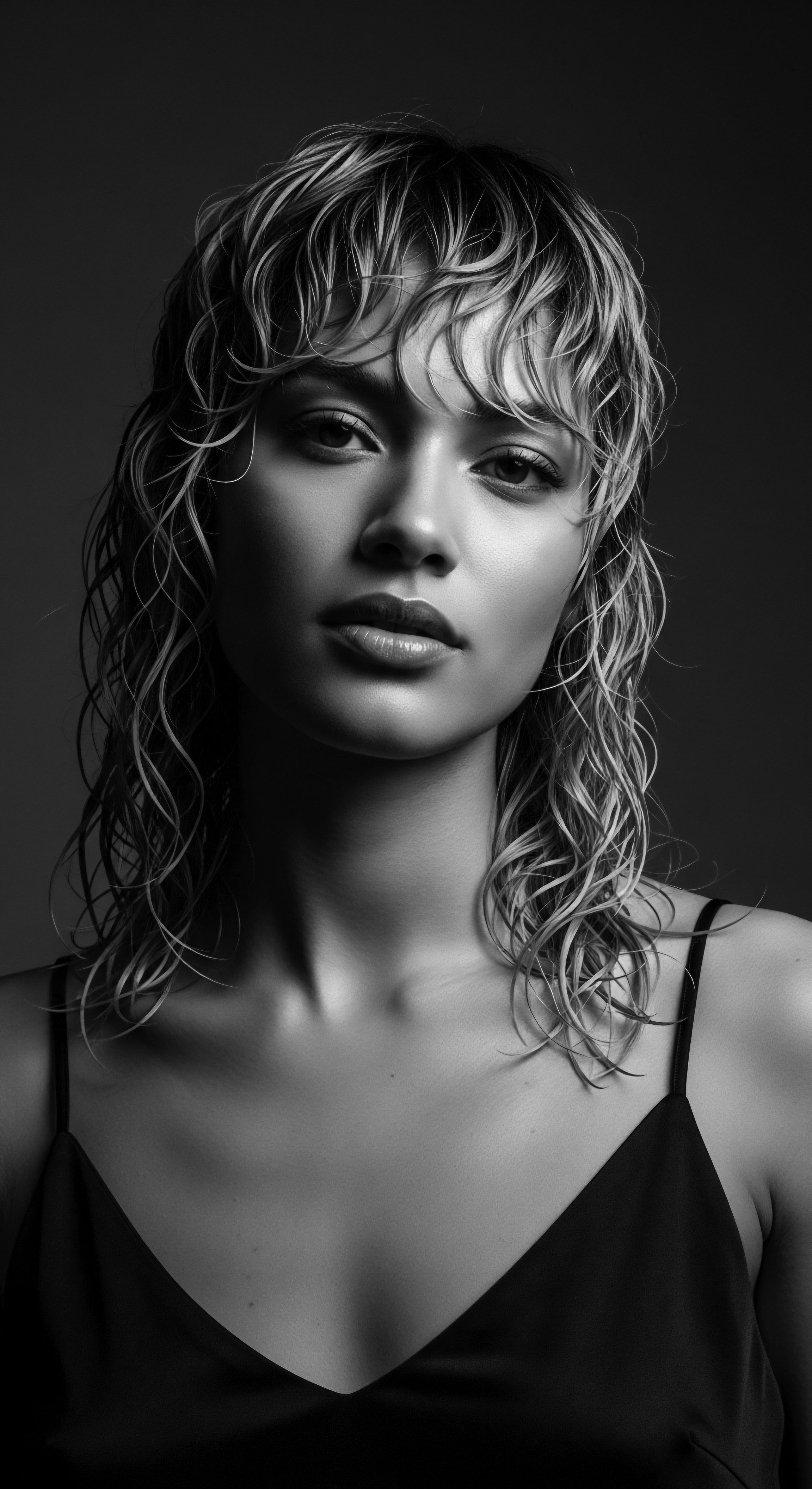
Guardians of Length ❉ Protective Styling Across Time
Protective styles stand as a cornerstone of textured hair care, minimizing manipulation and guarding delicate strands from environmental stressors. Their historical roots dig deep into ancient African civilizations, where styles like Braids, Twists, and Locs were not simply decorative but served as visual markers of community, status, and spiritual belief. For instance, archaeological findings from ancient Egypt and the Kingdom of Kush depict elaborate braided and wigged hairstyles, underscoring their social and religious significance.
During the transatlantic slave trade, when enslaved Africans were often forced to shave their heads as a brutal means of stripping identity, the tradition of braiding became a covert form of resistance. Stories recount how cornrows were intricately designed to carry messages, even mapping escape routes to freedom in regions like Colombia. This profound history means that every cornrow, every twist, today carries the echoes of survival and enduring heritage. The natural hair movement elevates these styles beyond mere convenience, recognizing them as tangible links to a past where hair was a language of survival and identity.
- Cornrows (Canerows) ❉ Tightly braided close to the scalp, originating thousands of years ago in Africa, used for practicality, social status, and even as encoded maps during slavery.
- Locs ❉ Formed by hair matting together, symbolizing spiritual connection, maturity, and a rejection of imposed beauty standards in many African and diasporic contexts.
- Bantu Knots ❉ A style of twisted hair sections coiled into knots, with origins in Southern African Bantu-speaking communities, used for definition or as a standalone style.
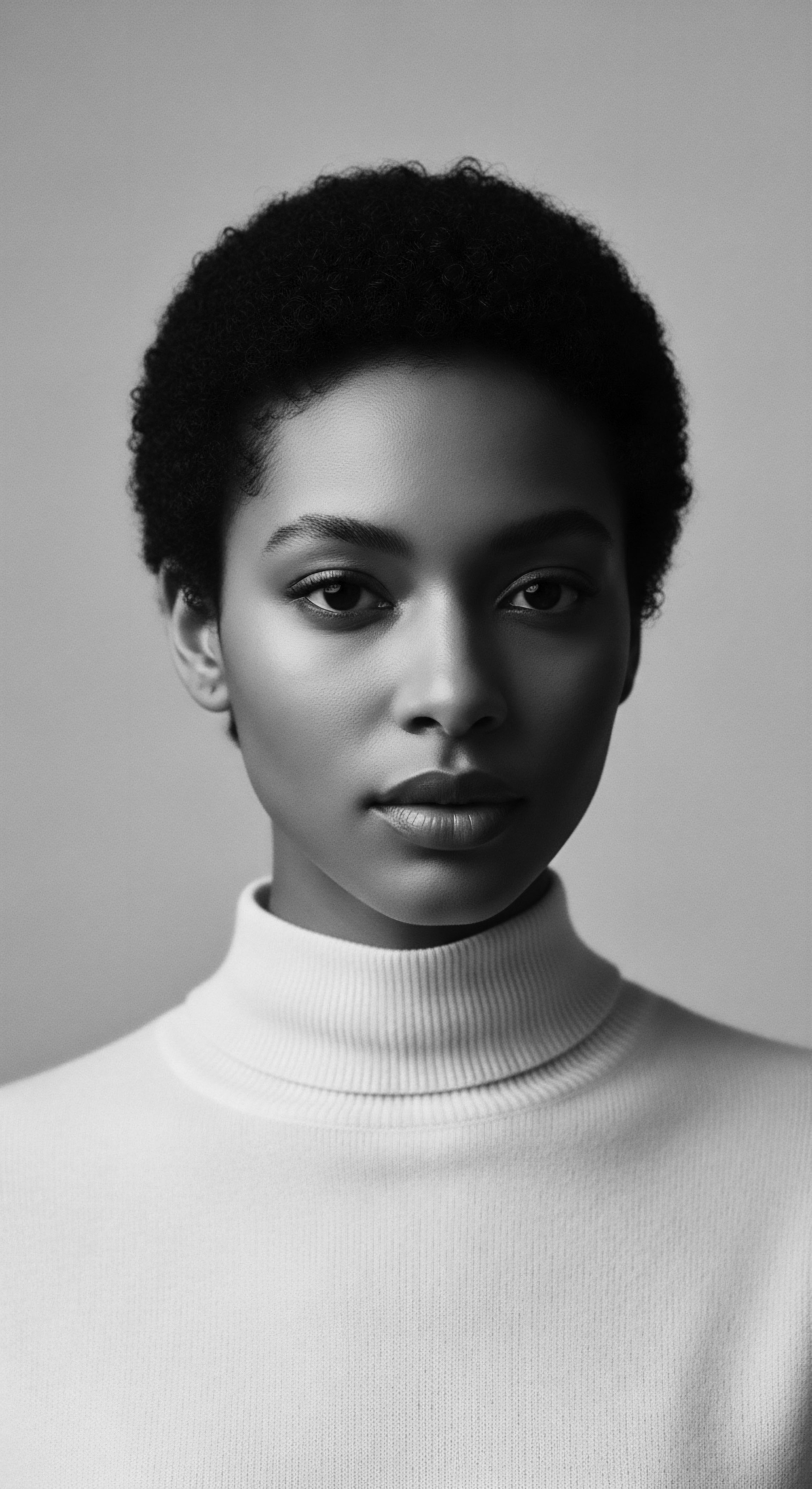
Defining Our Own Beauty ❉ Natural Styling Techniques
Beyond protective forms, the natural hair movement celebrates methods that define the inherent beauty of curls and coils. Techniques such as Wash-And-Gos, Finger Coiling, and Twist-Outs are modern iterations of ancestral practices that sought to highlight hair’s natural texture. While the specific nomenclature may be contemporary, the underlying principle of working with hair’s intrinsic pattern, rather than against it, finds resonance in historical accounts of African communities using natural materials to enhance hair’s appearance and health. This continuity reflects a heritage of adornment that was deeply personal and culturally specific.
The contemporary emphasis on natural hair styling techniques mirrors an ancient cultural appreciation for hair’s inherent beauty.

Adornment Through Time ❉ Wigs and Hair Extensions
The practice of augmenting hair with wigs and extensions is not a recent phenomenon. In ancient Egypt, both elite men and women wore elaborate wigs fashioned from human hair, wool, or plant fibers, often adorned with gold or beads, signifying wealth, status, and religious devotion. This historical precedent challenges the modern misconception that wigs or extensions are solely a product of contemporary fashion or a rejection of natural hair.
Instead, the natural hair movement recognizes their place within a broader heritage of hair artistry and expression. Wearing these enhancements can be a conscious choice for stylistic versatility or a nod to the long tradition of hair adornment, providing creative freedom without abandoning the core values of heritage.

Reframing Heat ❉ From Resistance to Reverence?
The history of heat styling for textured hair is often intertwined with narratives of assimilation and the pursuit of Eurocentric beauty standards. The advent of the hot comb in the 19th century and subsequent chemical relaxers offered means to temporarily or permanently straighten hair, a practice sometimes born of necessity to navigate discriminatory societal norms in workplaces and schools. The natural hair movement, however, approaches heat with caution and reverence, advocating for minimal use and proper protection.
It shifts the focus from altering texture to preserving hair health. This perspective mirrors an ancestral wisdom that prioritized long-term hair integrity, often favoring air drying or gentle manipulation over harsh treatments.

Tools of the Ancestors and Today
The tools we use to care for our hair are extensions of our hands, shaped by necessity and tradition. In ancient Africa, combs carved from wood, bone, or ivory were not merely utilitarian objects; they were often status symbols, intricately decorated, and sometimes buried with their owners, signifying their sacred nature. These tools held spiritual meaning, reflecting the belief that hair, as the highest point of the body, served as a spiritual gateway.
Today’s textured hair toolkit, while incorporating modern innovations, often revisits the principles of these ancestral instruments. Wide-toothed combs, designed to gently disentangle coils, echo the function of early African combs that respected the unique properties of textured hair. The emphasis on gentle materials and thoughtful design in contemporary tools aligns with a heritage that understood hair’s delicate yet resilient nature.

Relay
The natural hair movement extends beyond aesthetic preference; it functions as a societal relay, transmitting ancestral wisdom across generations while adapting to contemporary realities. This section explores how the movement informs holistic care and problem-solving, deeply rooted in heritage and ancestral knowledge, becoming a conduit for cultural and scientific understanding. We analyze the interplay of historical practices with modern science, providing a deeper understanding of how the natural hair movement contributes to a legacy of well-being that spans millennia.

Regimens as Living Archives ❉ Bridging Ancient Wisdom with Modern Science
Crafting a personalized textured hair regimen today involves a mindful interplay between personal hair characteristics and a wealth of knowledge, much of which traces back to ancestral practices. African communities historically developed intricate hair care routines, often tailored to specific hair types, environmental conditions, and available natural resources. These regimens were not standardized commercial lines but rather living archives of communal knowledge, passed down through oral tradition and lived experience. The movement encourages individuals to recognize their hair as unique, reflecting diverse genetic backgrounds, and to build routines that resonate with this individual and collective heritage.
An illuminating case study in the power of inherited knowledge concerns the Basara Arab women of Chad and their enduring practice of using Chebe Powder. For centuries, these women have maintained remarkably long, strong, and healthy hair, attributing its retention to a botanical mixture derived from the Croton zambesicus plant. This traditional remedy, rich in essential fatty acids, amino acids, and minerals, works by strengthening hair strands and minimizing breakage, particularly in harsh, dry climates.
The scientific understanding of chebe powder’s efficacy today validates centuries of observed results, providing a compelling illustration of how ancestral practices contain valuable, empirically demonstrable benefits for textured hair. This is not simply folklore; it is a meticulously preserved scientific application, passed through lineage.

The Nighttime Sanctuary ❉ Bonnet Wisdom and Cultural Continuity
The seemingly simple act of covering one’s hair at night with a Satin Bonnet or silk scarf holds a deep connection to historical and cultural practices across the African diaspora. Head coverings, in various forms, have held immense significance in African societies for centuries, symbolizing marital status, age, social standing, modesty, and spiritual devotion. The elaborate Gele of Nigerian Yoruba women, the vibrant Dukus of Ghana, or the practical headwraps of Southern Africa all attest to a long history of protecting and adorning the crown.
During periods of enslavement and subsequent oppression, headwraps sometimes became symbols of subservience, imposed by laws like the 18th-century Tignon Laws in Louisiana, which mandated that free Black women cover their hair. Yet, Black women transformed these mandates into acts of resistance and beauty, wearing luxurious, intricately tied coverings that reclaimed personal agency and cultural pride. The modern bonnet, while serving the practical function of preserving moisture and preventing friction damage during sleep, becomes a quiet yet powerful echo of this enduring tradition, a continued act of reverence for hair and heritage.

From Earth to Strand ❉ Ingredient Deep Dives and Ancestral Remedies
The natural hair movement’s emphasis on wholesome ingredients for textured hair often circles back to plants and substances used by ancestors for millennia. These traditional ingredients formed the bedrock of hair care before the advent of industrial chemicals.
Consider Shea Butter (from the Butyrospermum parkii tree), a foundational ingredient. Sourced predominantly from West Africa, where women have traditionally processed it for centuries, it has been used not only for hair and skin care but also for medicinal purposes and even as a food source. Its richness in essential fatty acids, such as oleic and linoleic acids, as well as antioxidants like Vitamin E, explains its renowned ability to moisturize, protect, and soothe the scalp. This traditional knowledge, passed down through generations of African women, finds contemporary validation in its widespread use in natural hair products globally.
Another ancestral ingredient making its way into modern routines is Fenugreek. Used in various traditional Indian and African hair remedies, its seeds are recognized for their protein and nicotinic acid content, believed to strengthen hair and support scalp health. This blending of traditional, empirically observed benefits with modern scientific analysis represents the ‘relay’ of knowledge, where ancient practices are not merely replicated but understood and affirmed by current understanding.

Addressing Challenges ❉ Ancestral Solutions, Modern Approaches
Textured hair, with its unique structural properties, can be prone to dryness and breakage if not cared for appropriately. Historically, communities developed nuanced strategies to manage these concerns, recognizing that maintaining moisture was paramount. For instance, the traditional practice of hair oiling in many African cultures speaks to a long-standing understanding of the need for external emollients to seal in hydration and protect the hair shaft.
The natural hair movement, drawing from this heritage, champions routines that prioritize moisture retention and gentle handling. This involves:
- Co-Washing (conditioner-only washing) ❉ A practice that reduces the stripping of natural oils, mirroring traditional approaches that may have used milder cleansing agents or less frequent washes.
- Layering Products (the L.O.C. or L.C.O. method) ❉ Applying liquid, oil, and cream to seal in moisture, echoing ancestral methods of using water-based treatments followed by natural oils and butters.
- Regular Protective Styling ❉ As discussed, these styles shield the hair from daily manipulation and environmental damage, a continuous thread from past to present.
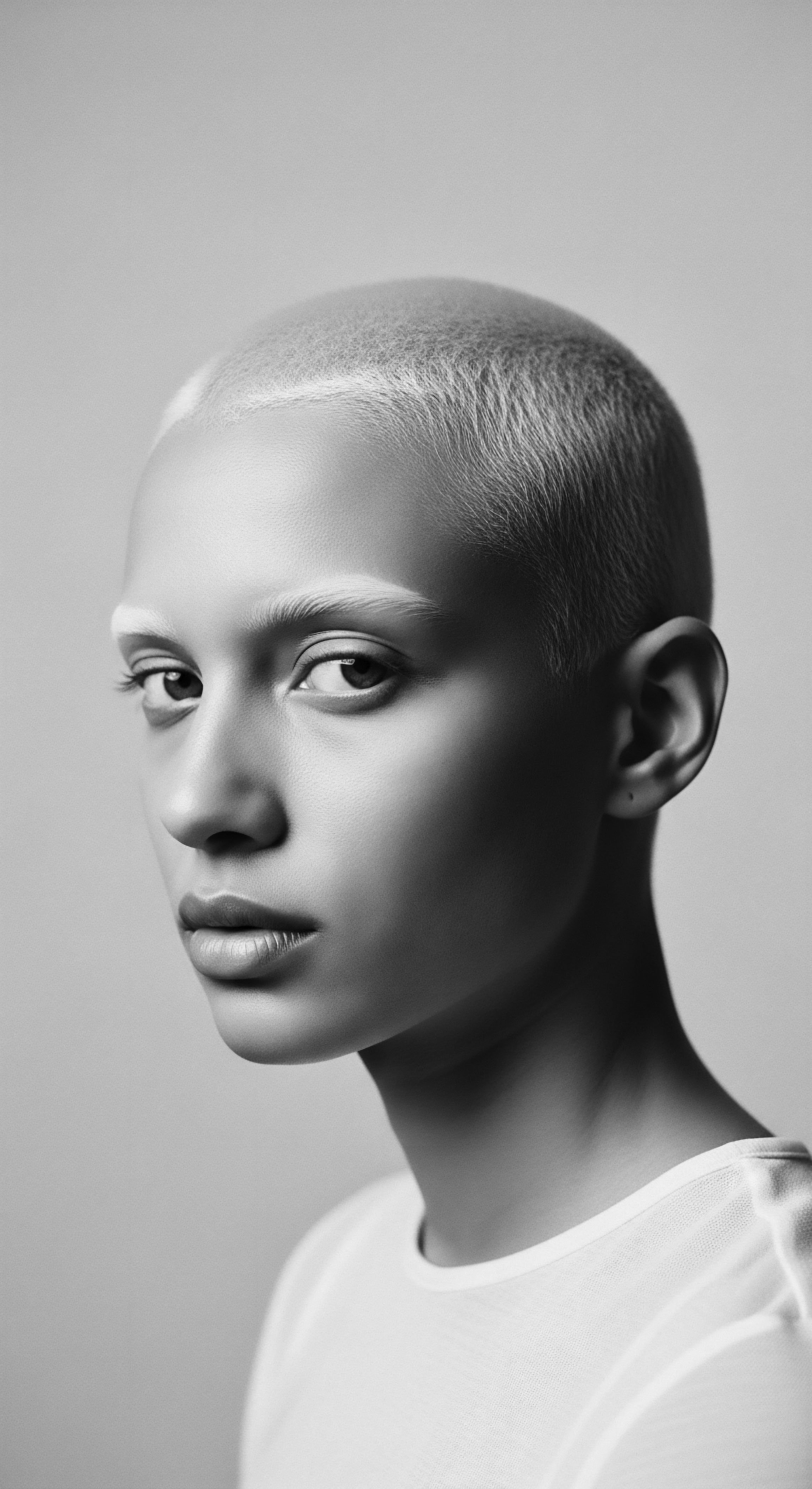
Hair as a Mirror ❉ Holistic Influences and Liberation
The natural hair movement does more than simply prescribe products and techniques; it champions a holistic view of well-being that sees hair health as intertwined with mental, emotional, and cultural health. In many African traditions, hair was considered sacred, a channel for spiritual energy, and a reflection of one’s inner state and connection to ancestors. The acts of braiding, adorning, and caring for hair were often communal, fostering bonds and transmitting cultural narratives.
Reclaiming natural hair reflects a profound act of self-acceptance and a powerful rejection of colonial beauty impositions.
The contemporary embrace of natural hair, therefore, represents a powerful act of self-acceptance, a liberation from Eurocentric beauty standards that historically imposed a narrow and often unattainable ideal. It is a declaration of pride in one’s ancestral lineage and a visible assertion of identity. This psychological liberation, experienced by countless individuals, mirrors the resilience of those who, through generations, found ways to preserve their hair heritage despite immense pressure and discrimination. The movement, in this sense, provides a space for healing, for celebration, and for continuing a story that began long ago, a story written in every curl, coil, and strand.

Reflection
The journey through the natural hair movement’s heritage reveals not a fleeting trend, but an enduring resonance, a profound dialogue with time itself. Each helical turn of a coil, each intentional gesture in its care, speaks to centuries of wisdom and resilience. The movement stands as a living library, its shelves laden with the ancestral knowledge of textured hair, meticulously preserved and passionately re-read by a new generation.
We have seen how the very biology of our hair is a gift from our forebears, a testament to adaptations forged in sun-drenched lands. The lexicon we now claim, the careful systems we employ to comprehend texture, are acts of naming ourselves anew, shedding imposed narratives for those born of our own experiences and history.
This re-engagement with natural hair practices is a ceremonial act, a quiet revolution of reverence. It is a daily reaffirmation of worth, echoing the deep societal and spiritual significance hair held in ancient communities. When we select a protective style, or apply a butter passed down through continental wisdom, we are not simply styling; we are participating in a continuous ritual, honoring those who came before. This heritage, fluid and dynamic, informs our approach to care, reminding us that true wellness encompasses not only the physical strand but the spirit it embodies.
The natural hair movement, then, is a beacon, illuminating the path back to a soulful understanding of hair as a cherished part of self, an unbroken link to a radiant past, and a bold declaration for an unbound future. It speaks to the enduring soul of a strand, eternally connected to its source.
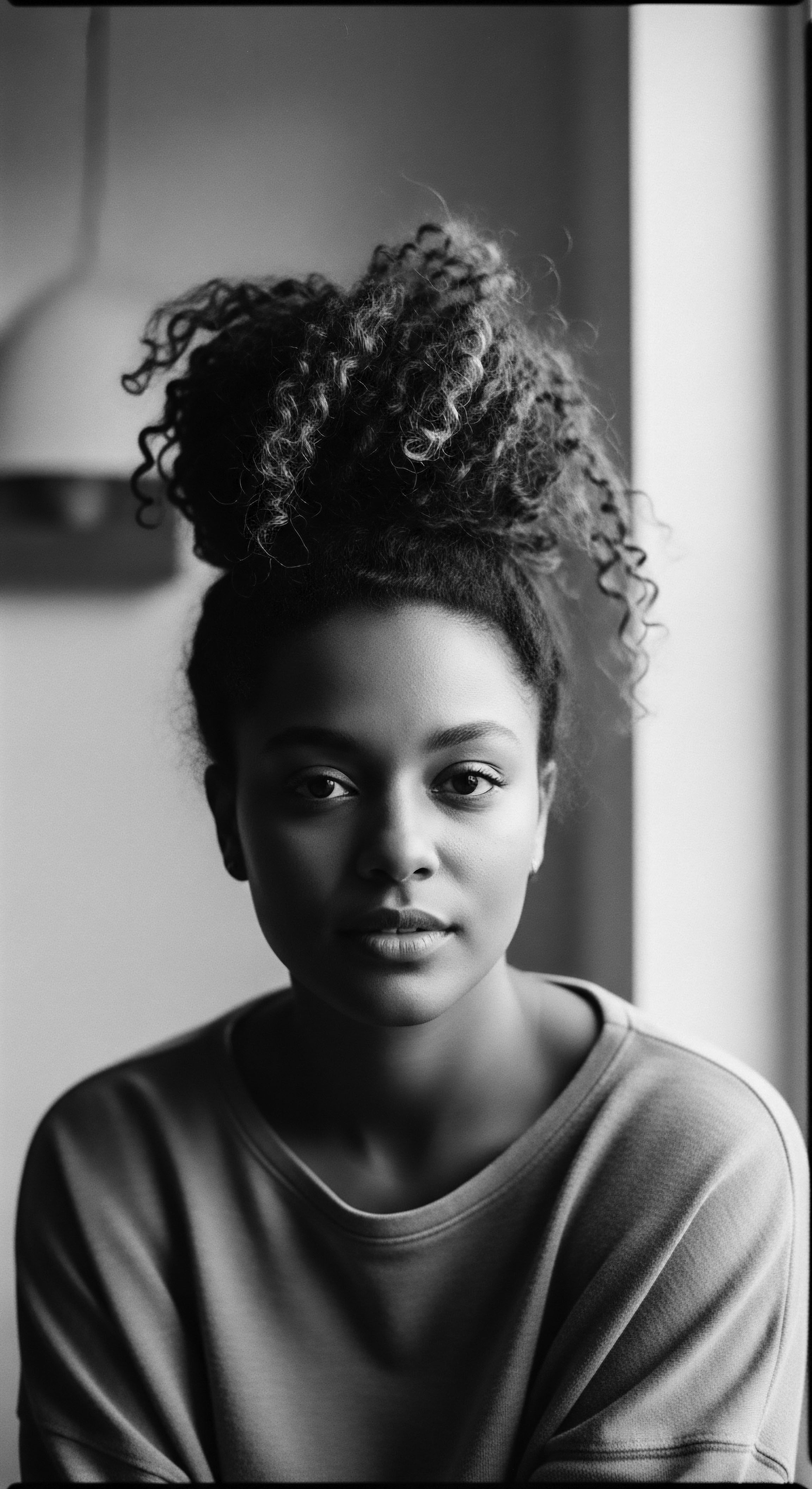
References
- Byrd, A. & Tharps, L. (2001). Hair Story ❉ Untangling the Roots of Black Hair in America. St. Martin’s Press, New York.
- Byrd, A. & Tharps, L. (2014). Hair Story ❉ Untangling the Roots of Black Hair in America. Macmillan, New York.
- Katsande, R. (2015). The Significance of Head Ties in Africa. Wilderness.
- Leach, E. (1958). Magical Hair. Journal of the Royal Anthropological Institute of Great Britain and Ireland, 88(2), 147–164.
- Lester, N. A. (2000). Nappy Edges and Goldy Locks ❉ African-American Daughters and the Politics of Hair. The Lion and the Unicorn, 24(2), 201-224.
- Robinson, C. (2011). Struggles with Beauty, Body Image, and Hair. NWSA Journal, 18(2), 24-51.
